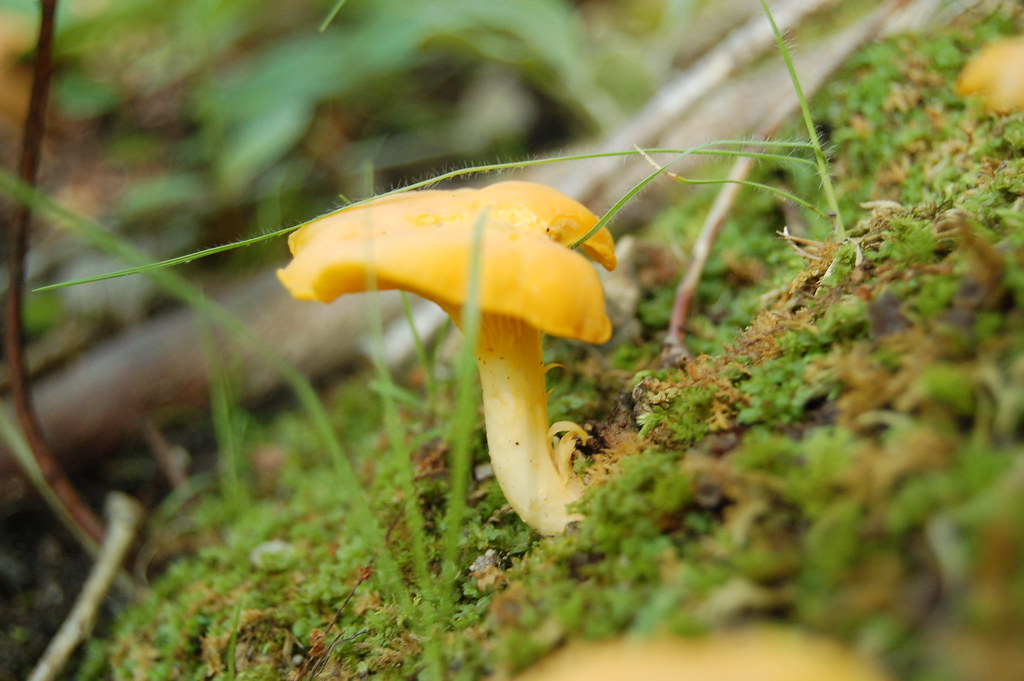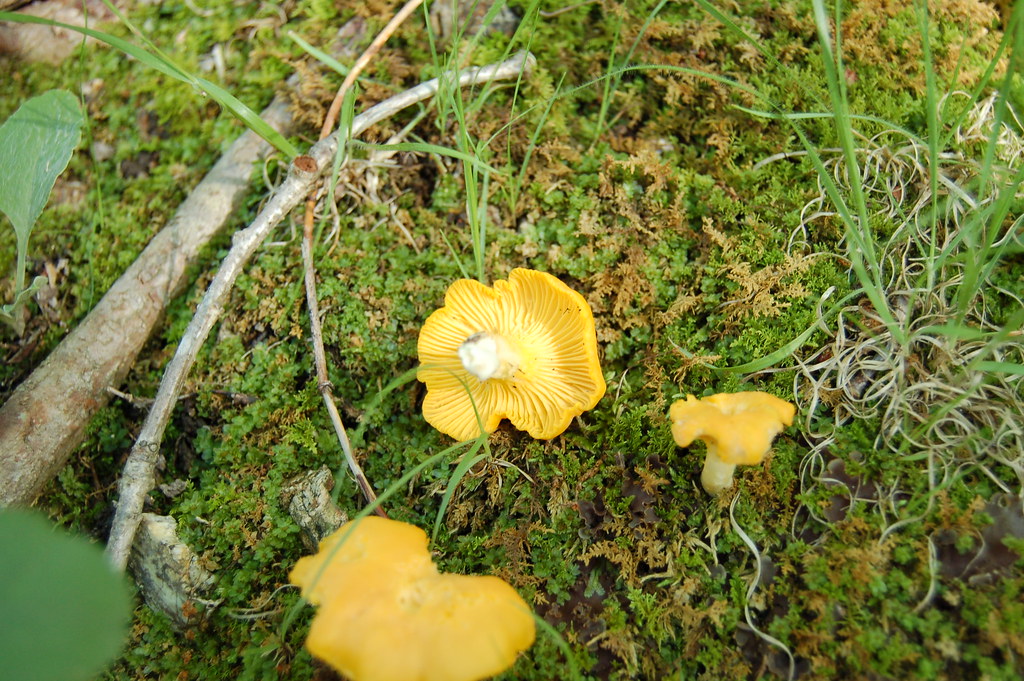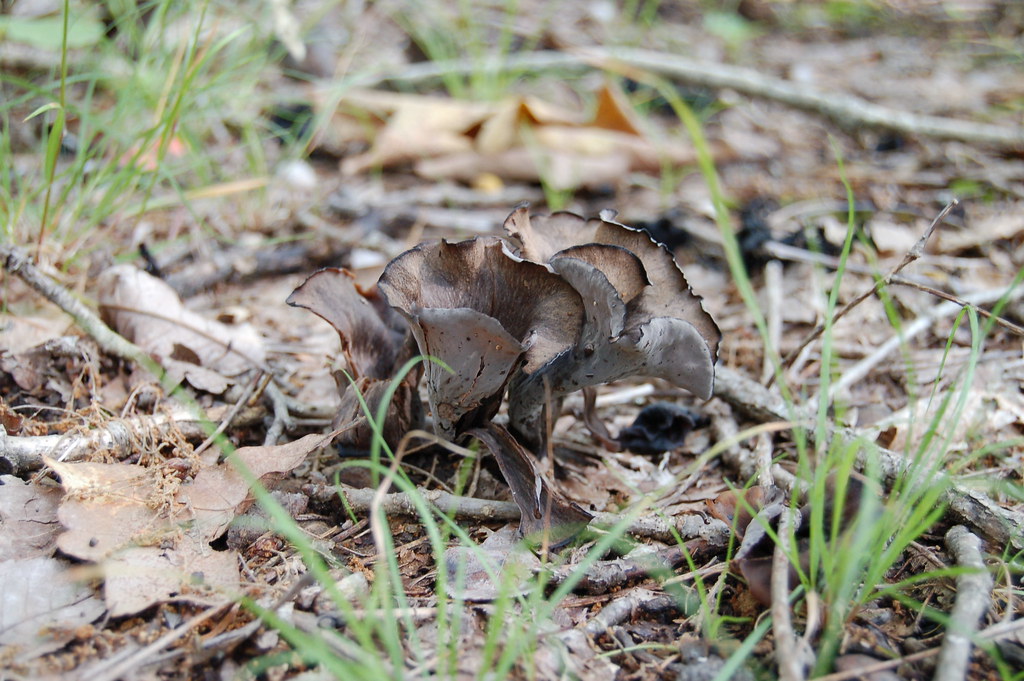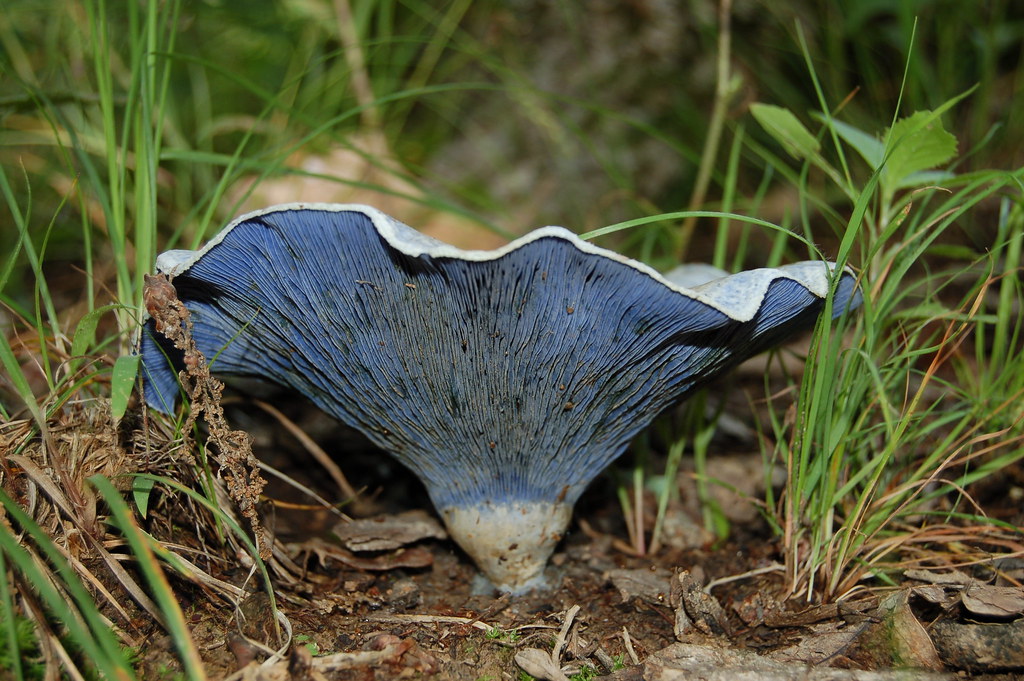I am always looking to learn more about fungi and what it edible among them, so I headed to a foray down at Ha Ha Tonka State Park on Friday with camping gear and mushroom baskets in tow. People may laugh at a hunter carrying a basket but when you come back with smooshed chanterelles (which are much more delicate than morels) you will soon understand why baskets are superior.
Anyway, the foray was hosted by the Missouri Mycological Society , or MOMS for short. I had recently had some email conversations with them about starting a Mid-MO chapter so I figured I had better check them out so I could see what they were like.
A better bunch of people you will not find. When I got there I was greeted warmly and with fine food and drink. Speaking of food and drink, I don't think I have ever feasted better on a camping trip in my life. From venison burgers to chicken of the woods goulash, I quickly realized how these people kept up the energy to go trapsing around mile after mile all day long, bringing back all sorts of fabulous fungi, but more on that later.
As I set up my tent, thinking of the woods, a fellow hunter came back after a ten minute scout in the woods right around camp with a basket full. There were many specimen in there but my eyes first noticed the beautiful clean yellow chanterelles in one side and next to them a larger pile of black trumpets.
Never having found a fresh black trumpet, the patches I found last year had only dried up mushrooms, I was instantly consumed and finished setting up the tent as fast as possible so I could hit the woods.
There was a beautiful group of chanterelles growing right at the trailhead across from camp, which is always a good sign. I spread out with a few others and we quickly got separated as we begin to focus on what was on the forest floor and less on each other. For the first hour, I could not find my own patch. Everyone else I saw had a good mess of them, but I had only a handful. After some time I realized my mistake as I stumbled across my first patch, which in this case seemed to be growing at the bottom of the sloping woods. I was working mainly up and across the top, like I would for yellow chants which explains my lack of them.
Realizing my mistake I backtracked and quickly picked a pound or so. What a marvelous smell they had. It was very fruity like common chants but much stronger and more pronounced. It was a sweet smell to my nose. And soon back in camp, I was eating some prepared by Shannon, the organizer and host for this foray. If anyone of you has read 100 Edible Mushrooms you may recognize his name from the section on eating pickled stinkhorn eggs. Luckily, I did not get to try any stinkhorn eggs, but the wild mushroom medley with broccoli was delicious.
When I wasn't picking, I did manage to take a few photos.
 First, here is a common yellow chanterelle. I didn't see any smooth ones yet, which is what I usually pick but these were everywhere.
First, here is a common yellow chanterelle. I didn't see any smooth ones yet, which is what I usually pick but these were everywhere. Here is a photo showing the underside . Notice the ridges instead of gills on the underside. I mainly picked the ones growing out of moss because they were especially clean as you can tell from this one.
Here is a photo showing the underside . Notice the ridges instead of gills on the underside. I mainly picked the ones growing out of moss because they were especially clean as you can tell from this one. These brightly colored chants are cinnabars. They were everywhere, which is good because you would need a lot of them to make a meal. The caps are usually the size of a dime. They do not add much flavor, but they sure do add a lot of color to chanterelle dishes.
These brightly colored chants are cinnabars. They were everywhere, which is good because you would need a lot of them to make a meal. The caps are usually the size of a dime. They do not add much flavor, but they sure do add a lot of color to chanterelle dishes. And here is a cluster of black trumpets. When you see this look around because, like morels, there are always more to be found. Unlike morels, there is lots more to be found. I picked a full lunch sack sitting in one spot for ten minutes and not moving an inch. They can fruit in quite an abundance if conditions are right and boy were they right.
And here is a cluster of black trumpets. When you see this look around because, like morels, there are always more to be found. Unlike morels, there is lots more to be found. I picked a full lunch sack sitting in one spot for ten minutes and not moving an inch. They can fruit in quite an abundance if conditions are right and boy were they right. Here is the same cluster from another angle. I tended to find them near moss, but let me stress the word tended. Being, in my humble opinion, one of the hardest mushrooms to see, I often first find them by looking for black in patches of moss. But I don't really think they have any true association with moss, as I found huge patches with no moss anywhere. They did however tend to grow around oak trees.
Here is the same cluster from another angle. I tended to find them near moss, but let me stress the word tended. Being, in my humble opinion, one of the hardest mushrooms to see, I often first find them by looking for black in patches of moss. But I don't really think they have any true association with moss, as I found huge patches with no moss anywhere. They did however tend to grow around oak trees. Here is a cluster that was no where near moss. Notice how the tips are starting to dry. They dry out fast and don't stay fresh long, even in moist conditions, but they fruit constantly so you can find fresh clusters throughout the season. You can see some dried up ones in the background of these photos.
Here is a cluster that was no where near moss. Notice how the tips are starting to dry. They dry out fast and don't stay fresh long, even in moist conditions, but they fruit constantly so you can find fresh clusters throughout the season. You can see some dried up ones in the background of these photos. This was a special find. Have you ever seen a blue mushroom? Well now you have and can you believe it is edible. Well, it is and it is mighty tasty. You cannot mistake indigo lactarius for another mushroom so it is a great one for beginners.
This was a special find. Have you ever seen a blue mushroom? Well now you have and can you believe it is edible. Well, it is and it is mighty tasty. You cannot mistake indigo lactarius for another mushroom so it is a great one for beginners. The gills are completely blue and when cut bleed a blue milk, giving it the common name blue milky. It is quite tasty and for a special treat for the kids slice it up and cook it in a pan with some eggs for breakfast. Even if your kids won't try the mushroom, they'll be sure to love the green eggs. Now if only I could find some green ham...
The gills are completely blue and when cut bleed a blue milk, giving it the common name blue milky. It is quite tasty and for a special treat for the kids slice it up and cook it in a pan with some eggs for breakfast. Even if your kids won't try the mushroom, they'll be sure to love the green eggs. Now if only I could find some green ham...All in all it was a great weekend and I learned an awful lot from the MOMS folks. But I will save that for future post on the benefits of a foray.
1 comment:
good stuff thanks.
Post a Comment